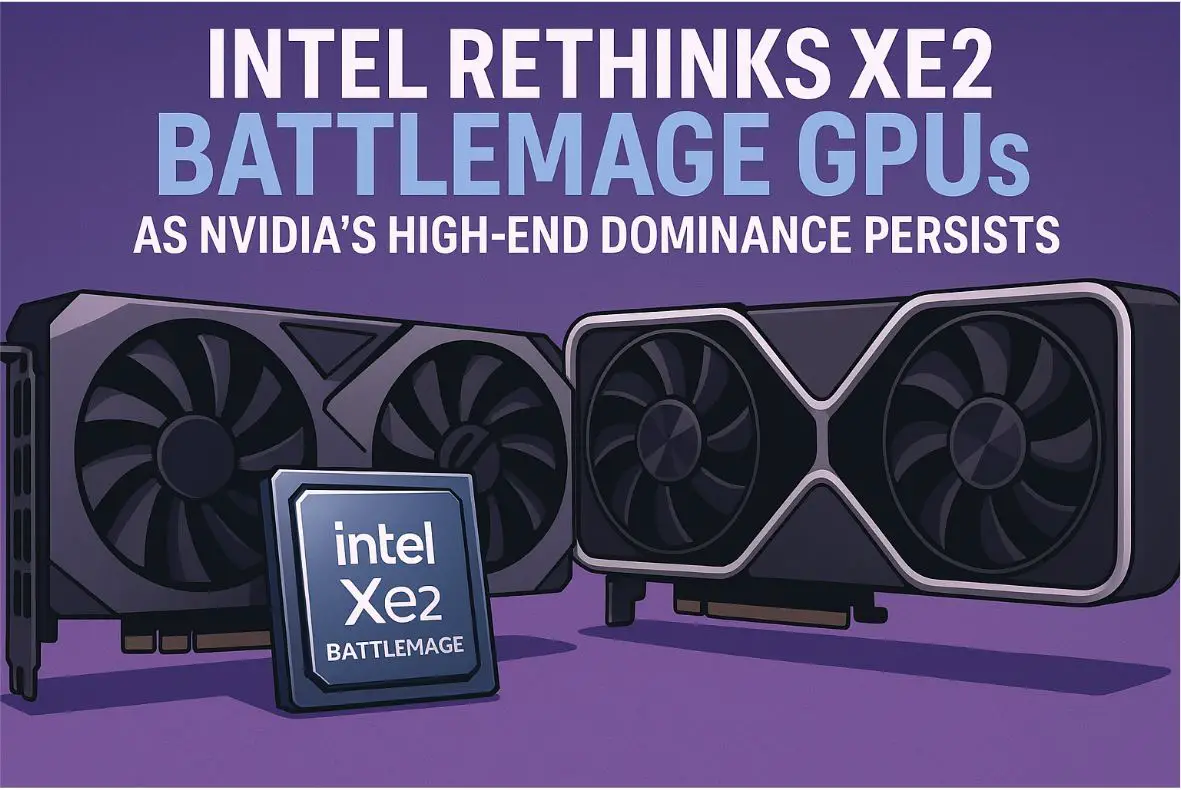
Intel’s highly anticipated Xe2 Battlemage GPUs are reportedly facing major cutbacks, signaling a dramatic pivot in the company’s strategy as Nvidia’s high-end lineup continues to dominate the market. According to multiple industry sources, Intel is re-evaluating its ambitious GPU plans amidst stiff competition and internal challenges that have come to light in recent months.
The Battlemage series was expected to bolster Intel’s presence in the discrete GPU market, a space long dominated by Nvidia and AMD. However, mounting production issues and escalating costs have forced Intel’s executives to reconsider the viability of the Xe2 Battlemage project. Insiders indicate that the company may be shifting focus toward more integrated solutions and strategic partnerships, leaving the Battlemage GPUs on the chopping block. This move comes as Intel grapples with market realities and the challenge of breaking through the entrenched high-end segment, where Nvidia’s offerings have set a near-unassailable standard.
Nvidia, meanwhile, shows no signs of wavering in its leadership role within the high-performance graphics arena. Its latest generation of GPUs, renowned for their exceptional performance in gaming, professional visualization, and data center applications, has continued to outperform competitors across a broad spectrum of benchmarks. Industry analysts note that Nvidia’s robust ecosystem, advanced software frameworks, and continuous innovation have made it extremely difficult for any newcomer to mount a significant challenge. The company’s deep investment in research and development, along with strong partnerships across various sectors, ensures that its high-end products remain the go-to choice for consumers and enterprise clients alike.
For Intel, the decision to potentially shelve the Battlemage line is seen as part of a broader strategic recalibration. Rather than engaging in a head-to-head battle with Nvidia’s established dominance, Intel appears to be focusing on its strengths in CPU technology and integrated graphics solutions. This shift might allow the company to reallocate resources to areas with a higher potential for market impact, such as artificial intelligence and advanced compute architectures. However, this move raises questions about Intel’s long-term vision in the discrete GPU space and whether it can successfully leverage its existing technology to capture a slice of a market that continues to grow rapidly.
As Intel and Nvidia continue to evolve their strategies, industry watchers are keenly observing how these shifts will reshape the competitive landscape. With Nvidia’s high-end GPUs slated to remain unchallenged for the foreseeable future, Intel’s recalibration serves as a stark reminder of the fierce competition and high stakes inherent in the next generation of computing technology.



